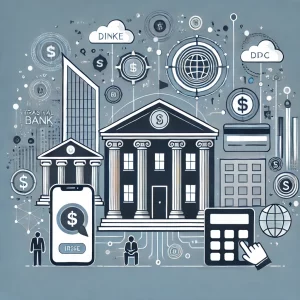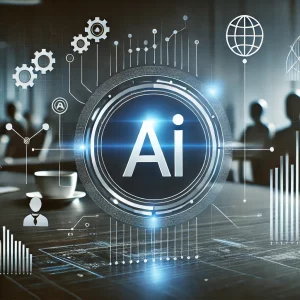The Impact of AI on Financial Markets

Artificial Intelligence (AI) is revolutionizing industries worldwide, and the financial sector is no exception. AI’s ability to process massive amounts of data, recognize patterns, and make informed predictions has profoundly impacted financial markets, from trading and investment strategies to risk management and regulatory compliance. As AI continues to evolve, its influence on financial markets is expected to grow even more profound.
In this article, we will explore how AI is transforming the financial markets, its applications in trading and investment, its role in risk management, and the opportunities and challenges it presents.
The Role of AI in Financial Markets
AI, particularly in the form of machine learning (ML) and advanced data analytics, has enabled financial institutions to extract valuable insights from large datasets, improve decision-making, and enhance operational efficiency. AI can analyze complex and vast amounts of historical and real-time data far beyond human capabilities, enabling market participants to make quicker, data-driven decisions. Its most notable applications in the financial markets include algorithmic trading, predictive analytics, and risk management.
Key Applications of AI in Financial Markets
1. Algorithmic Trading
One of the most significant impacts of AI in financial markets is in algorithmic trading, which involves the use of AI algorithms to execute trades based on predetermined conditions. These algorithms can analyze market trends, price movements, and historical data to predict future market behavior and make trades in real-time.
AI-powered algorithms can execute trades faster and more accurately than human traders, reducing latency and capturing market opportunities that might otherwise be missed. AI models can also continuously learn and adapt to changing market conditions, further enhancing trading strategies.
High-Frequency Trading (HFT) is a prime example of AI-driven algorithmic trading. HFT firms use AI algorithms to execute large volumes of trades in fractions of a second, profiting from small price discrepancies across different markets. This level of speed and precision has reshaped modern trading, creating highly efficient but volatile markets.
2. Predictive Analytics for Investment
AI’s predictive analytics capabilities allow investors to forecast stock prices, market trends, and economic indicators more accurately. Using machine learning models, AI can identify patterns in historical data and predict how assets will perform under various market conditions. This predictive power enables investors to make informed decisions about buying, selling, or holding assets.
For instance, AI models can analyze a wide range of factors—such as economic reports, company earnings, and market sentiment—helping investors identify emerging opportunities or warning signs of potential risks. AI-based robo-advisors, like Betterment and Wealthfront, are increasingly popular, offering automated, personalized investment advice based on an individual’s financial goals and risk tolerance.
3. Sentiment Analysis and Market Predictions
AI is also used to perform sentiment analysis on news articles, social media, financial reports, and other public sources. Sentiment analysis helps financial institutions assess market sentiment and investor behavior, providing valuable insights into how certain news or events may impact stock prices or market trends.
For example, AI algorithms can process vast amounts of social media data, such as Twitter posts or news headlines, to gauge public opinion about a company or sector. If AI detects a positive shift in sentiment, it may predict an upward movement in stock prices, allowing investors to capitalize on the opportunity.
4. Risk Management
Effective risk management is critical in financial markets, and AI is playing an increasingly important role in this area. AI models can analyze and monitor large datasets in real-time to identify potential risks and vulnerabilities, helping financial institutions make better decisions regarding risk mitigation.
In areas like credit risk, AI is used to assess the creditworthiness of borrowers by analyzing both traditional financial data (like credit scores) and alternative data sources (such as social media behavior, transaction history, or online purchases). This provides a more accurate and comprehensive view of a borrower’s risk profile.
AI is also instrumental in fraud detection. By analyzing transaction data and identifying unusual patterns, AI systems can detect fraudulent activities in real-time, preventing potential losses for financial institutions and investors.
AI’s Impact on Trading Strategies
AI has led to the development of more sophisticated and complex trading strategies. Some of the most prominent AI-driven trading strategies include:
- Quantitative Trading: Quantitative traders (or “quants”) use mathematical models and AI algorithms to develop trading strategies. AI is capable of finding correlations between different assets or markets that human analysts may overlook, allowing quants to design highly effective trading strategies.
- Arbitrage Opportunities: AI can spot arbitrage opportunities (where an asset is priced differently in two markets) faster than humans. By executing trades in milliseconds, AI-driven systems can profit from small price differences between assets across different exchanges.
- Portfolio Optimization: AI-driven portfolio optimization uses machine learning to determine the ideal mix of assets that maximizes returns while minimizing risk. AI can evaluate historical data, market trends, and individual investment preferences to create a personalized and optimized investment portfolio.
AI and Market Efficiency
AI’s ability to process vast amounts of data has improved market efficiency by enabling quicker reactions to market events and reducing the time it takes for new information to be reflected in asset prices. With AI algorithms constantly scanning the markets for opportunities, prices are more likely to reflect true market conditions in real time, reducing inefficiencies like mispricing.
However, the widespread use of AI in trading has also raised concerns about market volatility. Since many AI models rely on similar data and signals, they may execute trades simultaneously, amplifying market movements and increasing short-term volatility. This has led to debates about the potential for AI-driven “flash crashes,” where markets experience rapid, large-scale price drops in a short time frame due to algorithmic trading.
Challenges and Risks of AI in Financial Markets
While AI offers significant benefits, it also presents some challenges and risks that financial institutions must address:
1. Data Quality and Availability
AI’s effectiveness depends heavily on the quality and quantity of data it processes. Poor data quality, incomplete data sets, or biased data can lead to inaccurate predictions and trading strategies. Ensuring access to reliable, high-quality data is essential for successful AI-driven financial applications.
2. Over-Reliance on AI Models
Over-reliance on AI models can be risky, particularly if models fail to account for unexpected market events or black swan scenarios. Since AI models are trained on historical data, they may struggle to predict rare, unprecedented events, such as market crashes or political upheavals.
3. Regulation and Compliance
As AI adoption in financial markets increases, so do concerns about regulatory oversight. Governments and financial regulators are working to ensure that AI-driven trading strategies comply with existing laws and protect market integrity. The lack of transparency in some AI models, often referred to as the “black box” problem, makes it difficult for regulators to understand how AI is making decisions, raising questions about accountability.
4. Ethical Considerations
There are also ethical concerns surrounding the use of AI in financial markets. AI systems can perpetuate biases present in the data they are trained on, leading to unfair outcomes in areas like lending or investment advice. Ensuring that AI models are designed ethically and do not reinforce existing inequalities is an ongoing challenge for the financial sector.
The Future of AI in Financial Markets
The integration of AI in financial markets is still in its early stages, and its potential continues to expand as technology evolves. In the future, we can expect AI to become even more integral to financial systems, with innovations like:
- Explainable AI: AI models that provide clearer explanations for their decisions will help improve trust and transparency in AI-driven financial applications.
- AI-Enhanced Risk Management: AI’s predictive power will further enhance risk management capabilities, allowing financial institutions to identify and mitigate emerging risks more effectively.
- Personalized Financial Services: AI will drive more personalized financial services, offering tailored investment advice and financial products based on individual preferences and risk tolerance.
Conclusion
AI’s impact on financial markets is profound, transforming the way trades are executed, investments are made, and risks are managed. With its ability to analyze data quickly, predict market trends, and automate processes, AI has made financial markets more efficient and accessible. However, its rise also brings new challenges, such as increased market volatility and ethical concerns. As AI continues to advance, its role in shaping the future of finance will only become more significant, driving innovation and reshaping the global financial landscape.




